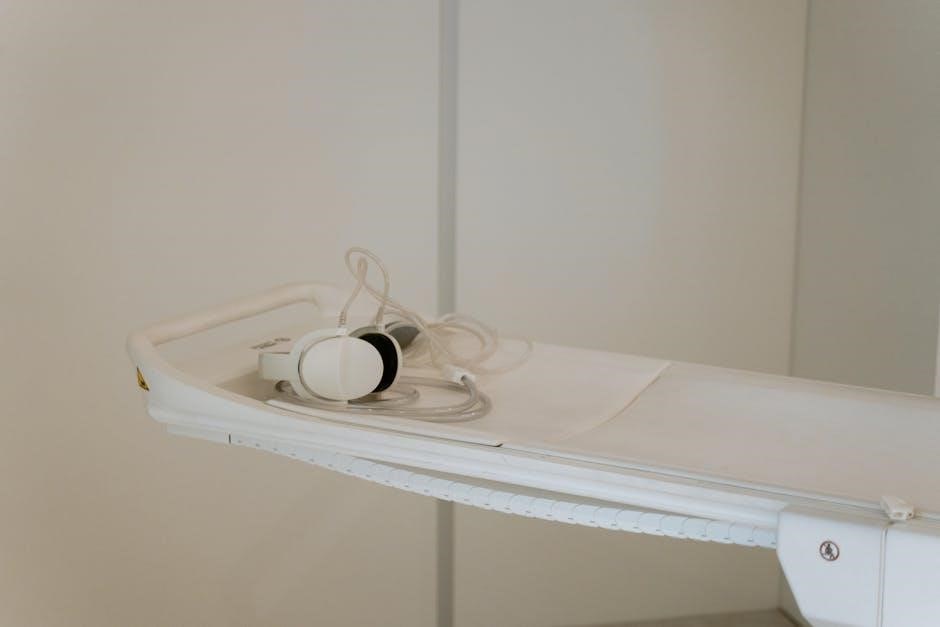
The TEAS Practice Test PDF offers a comprehensive overview of the exam, helping candidates assess their preparedness and familiarity with the test format and content.

1.1 What is the TEAS Practice Test?
The TEAS Practice Test is a valuable resource designed to prepare candidates for the Test of Essential Academic Skills (TEAS). It provides a simulated exam experience, mirroring the structure, content, and timing of the actual test. The practice test is typically divided into four main sections: Reading, Mathematics, Science, and English and Language Usage. Each section contains questions that assess the candidate’s knowledge and skills in these areas. By using the TEAS Practice Test PDF, candidates can identify their strengths and weaknesses, allowing them to focus their study efforts effectively. The practice test also includes detailed answer explanations, helping users understand their mistakes and improve their performance. This tool is an essential part of a successful study plan for anyone aiming to excel on the TEAS exam.
1.2 Importance of Using TEAS Practice Tests
Using TEAS practice tests is crucial for achieving success on the actual exam. These resources provide candidates with a clear understanding of the test format, question types, and content areas. By identifying strengths and weaknesses, individuals can tailor their study plans to focus on areas needing improvement. Practice tests also simulate exam-day conditions, helping candidates manage their time effectively and reduce anxiety. Regular use of these tools builds confidence and familiarity with the test structure, which are essential for performing well under pressure. Additionally, practice tests often include detailed explanations for correct and incorrect answers, enabling learners to understand their mistakes and improve their knowledge retention. Overall, incorporating TEAS practice tests into your study routine is a proven strategy for maximizing your scores and ensuring readiness for the exam.

Understanding the TEAS Exam Format
The TEAS exam consists of four main sections: Reading, Mathematics, Science, and English. Each section includes multiple-choice questions, with a total of 170 questions to be completed within 209 minutes. Understanding the format helps candidates prepare effectively and manage their time wisely during the test.
2;1 Structure of the TEAS Exam
The TEAS exam is divided into four main sections: Reading, Mathematics, Science, and English. Each section contains multiple-choice questions designed to assess a candidate’s knowledge and critical thinking skills. The Reading section includes 53 questions, focusing on comprehension, vocabulary, and paragraph analysis. The Mathematics section has 57 questions, covering algebra, geometry, and basic arithmetic. The Science section, with 53 questions, tests knowledge in biology, chemistry, anatomy, and physiology. Finally, the English section includes 57 questions, evaluating grammar, sentence structure, and writing skills. The total exam consists of 170 questions, and candidates have 209 minutes to complete it. Understanding this structure is crucial for effective time management and targeted preparation using TEAS practice test PDFs.
2.2 Key Sections of the TEAS Test
The TEAS test is organized into four primary content areas: Reading, Mathematics, Science, and English. Each section evaluates distinct skills essential for healthcare education. The Reading section assesses comprehension, vocabulary, and the ability to analyze passages. Mathematics focuses on numerical reasoning, algebra, geometry, and basic arithmetic. The Science section tests knowledge in biology, chemistry, anatomy, and physiology. The English section evaluates grammar, sentence structure, and writing skills. These areas are critical for nursing and allied health programs, as they ensure candidates possess the foundational knowledge required for success. Understanding these sections helps in targeting specific areas for improvement using TEAS practice test PDFs, ensuring a well-rounded preparation strategy.
2.3 Time Management Strategies
Effective time management is crucial for success on the TEAS test. The exam is timed, and candidates must allocate their time wisely across all sections. Practice tests are invaluable for improving pacing and ensuring that no section is left unfinished. By simulating exam conditions, including time constraints, test-takers can identify areas where they may need to work more efficiently. For instance, if a candidate consistently runs out of time on the Mathematics section, they can focus on improving their speed and accuracy in that area. Additionally, timed practice tests help build stamina and reduce anxiety, allowing candidates to maintain focus throughout the exam. Regularly reviewing results and adjusting study plans can further refine time management skills, ensuring optimal performance on test day. Mastering time management is a cornerstone of achieving a high score on the TEAS test.

Benefits of Using TEAS Practice Test PDFs
TEAS Practice Test PDFs provide a convenient and effective way to prepare, offering insights into strengths, weaknesses, and areas needing improvement while simulating exam conditions to build confidence and familiarity.
3.1 Identifying Strengths and Weaknesses

Using TEAS Practice Test PDFs is an excellent way to identify your strengths and weaknesses. By taking regular practice tests, you can pinpoint areas where you excel and those that require more attention. This process allows you to target your study efforts more effectively, ensuring you don’t waste time on concepts you’ve already mastered. The detailed rationales provided for each question highlight common mistakes and offer insights into better problem-solving strategies. Over time, this focused approach will help you track your progress and refine your skills in weaker areas. By understanding your performance gaps, you can create a more tailored study plan, leading to improved scores and increased confidence as exam day approaches. This targeted improvement strategy is a key advantage of using TEAS Practice Test PDFs for your preparation journey.
3.2 Simulating Exam Day Conditions

Using TEAS Practice Test PDFs allows you to simulate the actual exam experience, helping you prepare for the pressure and timing of test day. By taking timed practice tests, you can gauge your pacing and ensure you complete each section within the allotted time. This process builds stamina and reduces anxiety, as you become accustomed to the exam’s format and duration. Additionally, simulating exam conditions helps you familiarize yourself with the types of questions and the overall structure, minimizing surprises on the actual test day. Practicing under realistic conditions also enhances your ability to manage stress and stay focused, which are critical for optimal performance. By replicating the exam environment, you can develop the mental and physical stamina needed to approach the TEAS test with confidence and readiness.
3.3 Building Confidence and Familiarity
Regularly using TEAS Practice Test PDFs is an effective way to build confidence and familiarity with the exam format. By consistently practicing, you can hone your skills and develop a deeper understanding of the content. These practice tests provide a realistic representation of the actual exam, allowing you to become comfortable with the types of questions, time constraints, and overall structure. Over time, this familiarity reduces anxiety and helps you approach the exam with a positive mindset. Additionally, identifying and addressing weaknesses through practice tests fosters a sense of preparedness, which is crucial for achieving success on test day. The more you practice, the more confident you’ll feel in your ability to tackle the challenges of the TEAS exam;

Effective Study Strategies with TEAS Practice Tests

Using TEAS Practice Tests effectively involves active learning techniques and creating a structured study plan. These tools help identify areas needing improvement and promote targeted studying for better outcomes.
4.1 Creating a Study Plan
A well-organized study plan is essential for mastering the TEAS exam. Start by breaking down the material into manageable sections, focusing on key areas like math, science, and English. Set realistic goals and timelines to ensure consistent progress. Incorporate regular practice tests to identify strengths and weaknesses, allowing you to allocate more time to challenging topics. Prioritize understanding concepts over memorization, as this enhances long-term retention. Allocate specific days for reviewing mistakes and refining strategies. A structured schedule helps avoid cramming and ensures a balanced approach to preparation. By dedicating time to each section and tracking progress, you can build confidence and readiness for the exam. A clear plan not only streamlines your studying but also keeps you motivated and focused on achieving your goals.

4.2 Active Learning Techniques
Active learning techniques are crucial for effective preparation with TEAS practice test PDFs. Engage with the material by using practice tests to identify gaps in knowledge and reinforce understanding. Flashcards are a great tool for memorizing key terms and formulas, while group study sessions can provide collaborative learning opportunities. Self-quizzing and explaining concepts aloud help solidify comprehension. Interactive methods, such as creating concept maps or summarizing notes, can enhance retention. These techniques ensure you actively participate in the learning process rather than passively reading. Regularly applying these strategies alongside practice tests will help you stay focused and improve your performance. By integrating active learning into your study routine, you can better grasp complex topics and feel more confident on exam day. These methods not only make studying more engaging but also tailor your preparation to your unique learning style and needs.
4.3 Using Practice Tests for Retention
Using TEAS practice test PDFs is an effective way to enhance retention of the material. By regularly taking practice tests, you reinforce your understanding of key concepts and reduce the likelihood of forgetting important information. Spaced repetition, a proven learning technique, can be applied by taking tests at intervals to help solidify knowledge over time. Additionally, practice tests allow you to apply what you’ve learned in a real-world context, making the information more meaningful and easier to recall. Tracking your progress through practice tests also helps identify areas where you need to focus your study efforts, ensuring long-term retention. Consistent use of TEAS practice tests not only builds familiarity with the exam format but also strengthens your ability to retain and apply the knowledge effectively on test day.

Analyzing TEAS Practice Test Results
Analyzing your TEAS practice test results helps you understand your performance, identify strengths and weaknesses, and track your progress. This process allows you to refine your study strategies and improve overall exam readiness effectively.
5.1 Reviewing Your Score
Reviewing your TEAS practice test score is a critical step in understanding your performance. Your score provides a clear indication of how well you’ve mastered the exam content and highlights areas needing improvement. Start by analyzing your overall score to gauge your readiness for the actual exam. Next, break down your results by subject to identify specific strengths and weaknesses. For example, if you scored low in science but excelled in math, prioritize studying scientific concepts; Many practice tests also provide detailed score breakdowns, offering insights into your performance in subcategories like anatomy or algebra. Use this data to refine your study plan, focusing on topics where you underperformed. Regularly tracking your scores over time will reveal progress and help you stay motivated. By understanding your scoring trends, you can make informed decisions to enhance your preparation and achieve your target score.
5.2 Focusing on Weak Areas
Identifying and addressing weak areas is a key component of effective TEAS preparation. After reviewing your practice test scores, focus on the subjects or topics where you performed below your target. Use the detailed breakdown provided in the TEAS practice test PDF to pinpoint specific gaps in your knowledge. For example, if you struggle with anatomy or algebraic equations, dedicate extra study time to these areas. Create a targeted study plan that prioritizes your weaknesses, incorporating relevant resources like textbooks or online tutorials. Engage in active learning techniques, such as solving practice problems or creating flashcards, to reinforce your understanding. Regularly revisiting and mastering these challenging topics will significantly improve your overall performance. Remember, consistent effort and a focused approach are essential for overcoming weaknesses and achieving success on the TEAS exam.
5.3 Tracking Progress Over Time
Tracking your progress over time is a critical aspect of preparing for the TEAS exam. By regularly taking practice tests and reviewing your scores, you can monitor your improvement and identify areas that require more attention. Use the TEAS practice test PDF to assess your performance at different stages of your study journey. Compare your scores from initial diagnostic tests to later assessments to gauge how effectively your study strategies are working. This process helps you stay motivated and ensures that your efforts are yielding tangible results. Over time, you’ll gain a clearer understanding of your strengths and weaknesses, allowing you to refine your study plan. Consistent tracking also builds confidence, as you’ll see firsthand how your hard work translates into better performance. Regular progress checks are essential for staying on track and achieving your goals;
The TEAS Practice Test PDF is a valuable resource for building confidence and preparedness. Regular use enhances your ability to succeed on exam day.
6.1 Final Tips for Success
Consistently practice with TEAS Practice Test PDFs to master the content and format. Analyze your results to identify areas needing improvement and adjust your study plan accordingly. Simulate exam-day conditions during practice to build time management and confidence. Stay motivated by setting realistic goals and celebrating progress. Prioritize active learning techniques, such as taking notes and reviewing rationales, to retain information effectively. Utilize study guides and community resources for additional support. Finally, ensure you understand the exam format and question types to minimize surprises on test day. By combining these strategies, you can maximize your potential and achieve a high score on the TEAS exam.
6.2 Staying Motivated and Prepared
Staying motivated and prepared is crucial for success on the TEAS exam. Regularly utilize TEAS Practice Test PDFs to track your progress and identify areas for improvement. Set realistic goals and celebrate small achievements to maintain a positive mindset. Surround yourself with a supportive study community to share resources and gain encouragement. Stay consistent with your study routine and ensure you understand the exam format and content. Simulate exam-day conditions during practice to build confidence and reduce anxiety. By combining these strategies, you can remain motivated and prepared throughout your study journey, ensuring you are ready to excel on the TEAS exam.